 Virginia Department of Historic Resources
Virginia Department of Historic Resources Virginia Department of Historic Resources
Virginia Department of Historic ResourcesFrom an impressive six-figure total of recorded architectural resources to rare findings from the oldest archaeological site in the Commonwealth, here are a few fast facts highlighting historic preservation excellence in Virginia.
By DHR Staff
All photographs are from DHR unless otherwise indicated. …continue reading the story
called State Superlatives in Historic Preservation
This unique state landmark boasts ties to a late-19th-century Catholic school for African American and Native American girls founded by Katharine Drexel (1858-1955), the second U.S.-born individual to be made a saint.
By Lena McDonald
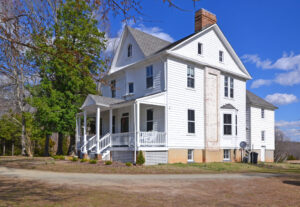
Rosemont was built around 1898 by C.L. Dodd Jr. The house is an excellent, but unusual, example of the Queen Anne style in Powhatan County. Its multiple-gable roof, pediments with tympanums, paneled chimney, oriel window, two windows with small squares of stained glass, and large front porch are characteristic elements of the Queen Anne design. Dodd employed an unusual floor plan with no central hall; instead, four large rooms are on the first and second floors. The lack of a hall and the placing of small corner fireplaces in each room may reflect Dodd’s northern background. An especially notable feature is the main staircase, which has tapering chamfered posts, a heavy molded handrail and delicate turned balusters. These attributes are associated with the Eastlake style, which was not commonly used in Virginia but was quite popular in the northeast during the late 19th century.
The author provides a recap of the workshop and the latest updates on the Virginia Battlefield Preservation Fund.
By Wendy Musumeci
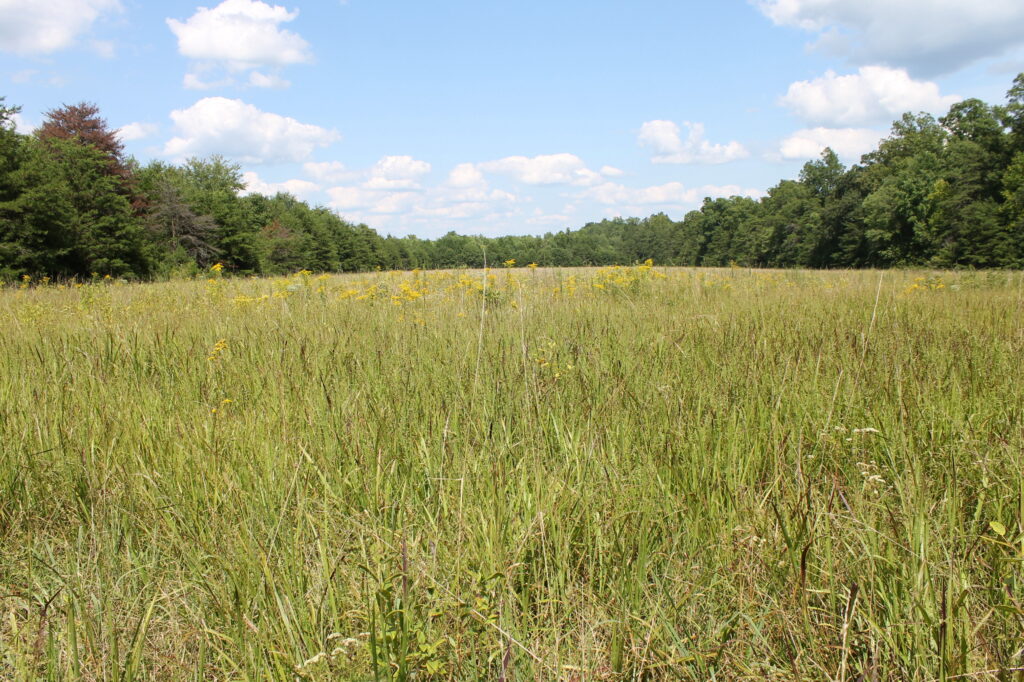
On May 2, 2023, Easement Program Staff at the Department of Historic Resources (DHR) hosted a one-hour virtual workshop on the Virginia Battlefield Preservation Fund (VBPF) grant program. This is the first time DHR has held a public information session about the VBPF. More than 20 people representing various land trusts, state agencies, localities, and conservation organizations attended the workshop. It was an exciting opportunity to reconnect with our battlefield preservation partners! …continue reading the story
called DHR Hosts Virtual Battlefield Grant Program Workshop
The Bedford Training School served as Bedford County’s first public school to provide secondary education for Black students during the Jim Crow period of segregation. After the county integrated its school system in 1970, the building was repurposed to house the Bedford County School Board’s offices. The building recently was rehabilitated using state historic tax credits.
By Lena McDonald
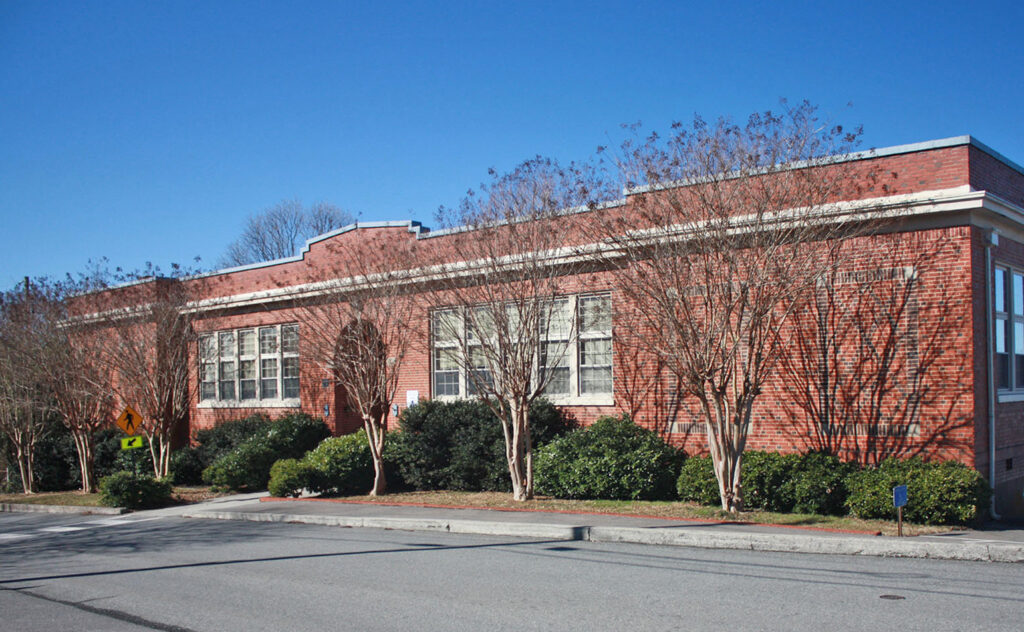
During the Jim Crow era of segregation, Bedford County constructed the Bedford Training School in 1929-1930 as its first public school to provide secondary education for Black students. The State Department of Education’s Division of School Buildings provided architectural plans for the school, which the county expanded in 1939-1940 to house additional classrooms in a two-story brick addition at the rear. Located in the Town of Bedford, Bedford Training School became a consolidated elementary school for Black students in 1954, corresponding with the completion of Susie G. Gibson High School. Those renovations—and the opening of a new high school for African American students—represented efforts to uphold the “separate but equal” rationale used to justify segregated schools during the Jim Crow era, and played into Virginia’s “Massive Resistance” counter-movement to federal court rulings that called for desegregating public schools. In 1970, the county fully integrated its school system, and later repurposed the building for the Bedford County School Board offices. …continue reading the story
called A Study in Preservation Excellence: Bedford Training School
The author provides a behind-the-scenes study of how rehabilitation tax credits used to restore a popular entertainment hub breathed new life into one historic downtown in Southwest Virginia.
By Carolyn Zemanian
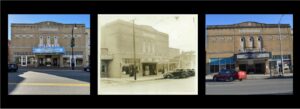
Established in 1928, the Millwald Theatre is an architectural centerpiece of Wytheville’s historic Main Street. The building’s striking, three-bay brick façade is detailed with, cast-stone decoration and crowned with a ca.-1939 electric marquee. Over its long history, the theater has also served as a center of Wytheville society and entertainment. In addition to showing films, the theater was a popular venue for graduations, vaudeville shows, political debates, fundraisers, and other community events. In 2003, the Millwald Theatre celebrated the 75th anniversary of its opening. …continue reading the story
called A Star Is Reborn: The Rehabilitation of Wytheville’s Millwald Theatre
Exploring the story behind one of the first properties in Virginia to be placed under an historic preservation easement.
By Megan Melinat
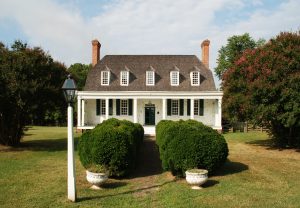
In 1966, the same year Congress passed the National Preservation Act, the Commonwealth of Virginia instituted the Virginia Historic Preservation Easement Program, thus establishing a tool that would enable historic landmarks to enjoy long-term legal protection while remaining in private ownership. …continue reading the story
called Old Mansion in Caroline County: History, Houses, and Horses
The latest updates on this grant program and how to find out if a grave or cemetery is eligible for funding.
By Joanna Wilson Green
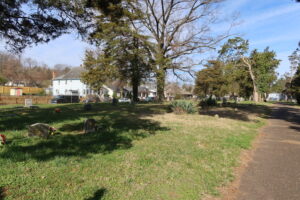
As the end of the Fiscal Year 2022-2023 Grant Season approaches, we wanted to take a moment to update you on DHR’s African American Cemetery & Graves Fund. To date, we have been privileged to disburse more than $80,000 in support of the good work that is currently happening all around the Commonwealth. We are also continuing to work on new applications.
…continue reading the story
called Grave Matters: The African American Cemetery & Graves Fund
The author offers an example of how one Southern Virginia city made historic rehabilitation tax credits a part of its downtown revitalization plan.
By Jessica Ugarte

DHR’s Historic Rehabilitation Tax Credit (HRTC) Program began at the federal level in 1979. At that time, the credit could only be applied toward 10 percent of the eligible renovation costs for buildings older than 20 years old. Since then, the federal HRTC Program has increased the tax credit on eligible rehabilitation costs to 20 percent for work completed on buildings listed in the National Register of Historic Places. …continue reading the story
called How Historic Rehabilitation Tax Credits Contributed to the Revitalization of Downtown Danville
At the request of staff from the Museum of Chincoteague Island, DHR’s Eastern Regional Archaeologist Mike Clem spent a week with local volunteers digging for traces of the mysterious camp that was once used by the U.S. Army during World War II.
By Mike Clem

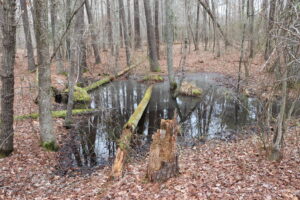
By Brad McDonald
At the invitation of the City of Newport News, the author, a DHR staff archaeologist, and his colleague Joanna Wilson Green attended the presentation ceremony for the Governor’s Environmental Excellence Award at the 2023 Environment Virginia Symposium. The event was held at the Virginia Military Institute in Lexington, Virginia. …continue reading the story
called City of Newport News Receives Award in Land Conservation for Grafton Ponds Easement
By Brad McDonald | All photos courtesy of the author.
In March 2023, DHR completed an archaeological investigation at the Little Fork Church located near the village of Rixeyville in Culpeper County. Listed on the National Register of Historic Places in 1969, the church is one of the few remaining examples of a house of worship from the colonial period in the Virginia Piedmont. Although the current structure was built between 1774 and 1776, church records indicate this locale was used for religious purposes as far back as the 1730s. …continue reading the story
called DHR, Jamestown Rediscovery, and Germanna Foundation Conduct Field Investigation at Little Fork Church in Culpeper County
By Joanna Wilson Green and Brad McDonald
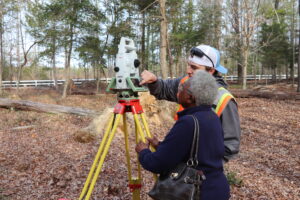
DHR archaeologists Joanna Wilson Green and Brad McDonald recently assisted personnel from the Land Survey division of Timmons Group to map and record the boundaries and more than 260 individual graves located within the Hickory Hill Slave and African American Cemetery, located in Hanover County.
…continue reading the story
called DHR Completes Survey Project at Hickory Hill Slave and African American Cemetery
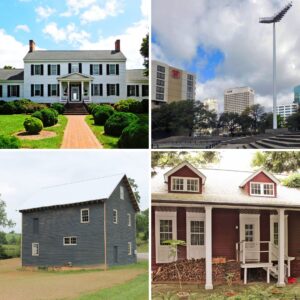
—New listings are in the counties of Accomack, Northumberland, Pulaski, Fairfax, Loudoun, Westmoreland, Halifax, and Floyd; and in the cities of Norfolk and Newport News—
Among ten places recently added to the Virginia Landmarks Register (VLR) are properties that house one of the longest-lasting blacksmith services in the Eastern Shore, a 19th-century plantation with roots dating to the state’s colonial period, a storied dwelling that once served as a rest stop for travelers along the historic Georgetown Pike, and the first school in Pulaski County to integrate following the U.S. Supreme Court’s landmark decision in Brown v. Board of Education (1954) establishing that racial segregation in public schools is unconstitutional. …continue reading the story
called State Adds 10 Historic Sites to the Virginia Landmarks Register
The author’s recent visit to the cemeteries around Buggs Island Lake leads to a major revelation about the circumstances surrounding the mid-20th century reservoir’s construction in Mecklenburg County.
By Tim Roberts
Identifying undocumented historic African American cultural resources is my primary job as Community Outreach Coordinator at the Virginia Department of Historic Resources (DHR). Cemeteries, alongside churches and schools, loom large among historic resources of great significance to many Black communities. Two weeks ago, DHR cemetery archaeologist, Joanna Green, and I visited five cemeteries around Buggs Island Lake in southern Mecklenburg County. All but one of these cemeteries is associated with historic African American churches. None of them had been recorded in the Virginia Cultural Resource Information System, the commonwealth’s database of historic architecture and archaeological sites. …continue reading the story
called The Historic Graves of Buggs Island Lake
We came in with a bang and introduced the grant program to hundreds of attendees at a webinar in early February. So, what now? Continue on to read about some of our successes so far, how we plan to improve outreach, and what to expect as far as next steps to take in the application process.
By Caitlin Sylvester
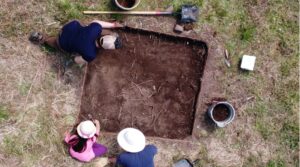
At DHR, we have been excited about the potential of the Virginia Black, Indigenous, and People of Color (BIPOC) Historic Preservation Grant Fund program for over a year now – ever since the bill that established the Fund started making its way through the General Assembly session in 2022. The BIPOC Grant Program represents a long overdue effort to fund the preservation of important spaces for Virginia’s Black, Indigenous, and People of Color communities that have been systemically overlooked, underfunded, and/or demolished. The preservation of these resources is vital to telling the whole history of our multi-faceted and diverse state. Funding for bricks-and-mortar repairs and property acquisitions is also somewhat scarce in historic preservation, so the focus of this grant on those activities as well as archaeological data recovery is very exciting. …continue reading the story
called The Launch of the Virginia BIPOC Historic Preservation Grant Program
The author takes readers through the challenges of restoring one of the oldest known surviving log dwellings in Western Virginia after decades of neglect.
By Michael Pulice

A short time ago, I stopped by the old Rutledge place to see a remarkable restoration project in progress. Located in the beautiful North Fork of the Roanoke River Valley in Montgomery County, an area designated back in 1989 as the North Fork Valley Rural Historic District (RHD), the log dwelling perhaps best known as the Rutledge House had fallen into poor condition over many decades. Photos from the early 1970s depict the house in only fair condition. When I made my first visit to the property in 2014 with a student from nearby Virginia Tech, the house had already been vacant for years.
Whether they were made of functional iron or intricate brass, locks were the key to securing buildings and rooms in colonial-era Virginia.
By Laura Galke
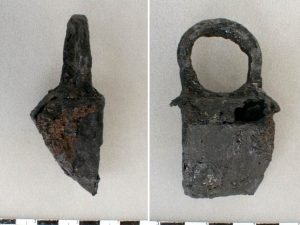
During the 1700s, Virginia’s consumers were tempted by a greater variety of locks to secure their buildings and interior rooms. By the mid-1700s, the aesthetic appearance of locks became increasingly important. A lock’s style, quality and material conveyed to users an idea of what lay beyond the secured space and – importantly – who was authorized to access that space. …continue reading the story
called How did Virginians keep their spaces safe during the 1700s?
https://wordpress-851339-3533967.cloudwaysapps.com/PlacesExplorer
Use your mobile device or computer to learn about places listed on the Virginia Landmarks Register and National Register of Historic Places, read the text of local historical highway markers, and get a feel for just how much archaeology and architecture surrounds us. …continue reading the story
called Learn about history across Virginia with DHR’s Places Explorer
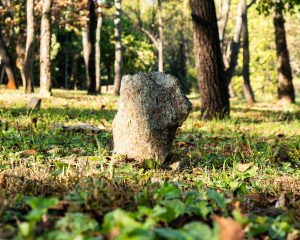
Do you know about a cemetery that needs attention?
Make sure that DHR knows about it, too!
Report it to us with our new online map tool and form. Using your mobile device or computer, provide DHR with some basic information about the cemetery and its location. We will check our records and connect a DHR staff member with you for follow up.
And please note: Recording a cemetery using this form will begin the process of adding it to our databases at the Virginia Department of Historic Resources, but it does not guarantee protection of the burial ground.
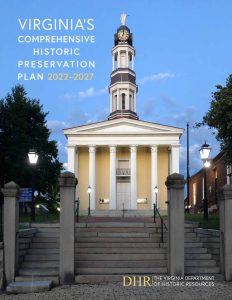 As Virginia’s State Historic Preservation Office (SHPO), DHR is mandated to periodically develop and publish a Statewide Comprehensive Preservation Plan (under the National Historic Preservation Act of 1966, as amended). On November 10, 2021 DHR published Virginia’s Comprehensive Historic Preservation Plan, 2022–2027. The plan is far-reaching and intended both to inspire and to represent the work of the diverse stakeholders who benefit and who shape the future of Virginia’s historic landscape. The plan’s goals, objectives, and outlined strategies target DHR’s next six-year planning cycle, 2022 through 2027.
As Virginia’s State Historic Preservation Office (SHPO), DHR is mandated to periodically develop and publish a Statewide Comprehensive Preservation Plan (under the National Historic Preservation Act of 1966, as amended). On November 10, 2021 DHR published Virginia’s Comprehensive Historic Preservation Plan, 2022–2027. The plan is far-reaching and intended both to inspire and to represent the work of the diverse stakeholders who benefit and who shape the future of Virginia’s historic landscape. The plan’s goals, objectives, and outlined strategies target DHR’s next six-year planning cycle, 2022 through 2027.
“. . . this plan envisions a time when historic places are more fully valued and recognized as assets for education, tourism, environmental sustainability, and economic vitality. It is built on the premise that everyone’s history has value and that, because historic properties are a source of connection and pride, they play an important role in building stronger communities,” writes DHR Director Julie V. Langan in her message to introduce the plan.
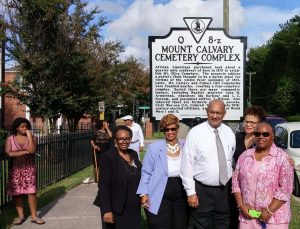
(See below for Special Announcements & Opportunities.)
DHR acknowledges that meaningful collaboration with African American and Virginia Indian communities towards the development and implementation of preservation agendas has been regrettably limited. Neglect and a lack of direct engagement has led to the loss of many historic properties of significance to these constituencies. Moreover, many such resources are not represented in the Virginia Cultural Resource Information System (VCRIS).
…continue reading the story
called Community Outreach Coordination
In preservation circles and at DHR, people often refer to a “historic resources survey.” In this brief video (5 min.), DHR’s Blake McDonald, manager of the Architectural Survey & Cost Share Grant Program, explains clearly what exactly such a survey is and entails—and why it does not affect property owners or their property (beyond documenting the property’s historic character).
DHR now has two newsletters: a DHR Quarterly Newsletter, and a newsletter for Register Program Updates. We invite you to subscribe to our newsletters. Once you have signed, you will receive an email asking you to confirm your subscription. Any questions or problems, please contact us (Choose “General Questions in the Contact Form.“). We look forward to hearing from you and keeping you up to date with DHR’s register programs and other preservation news and Virginia history.